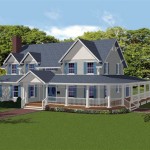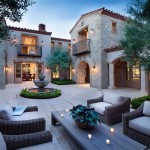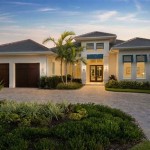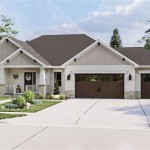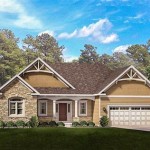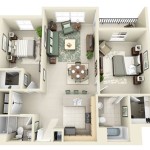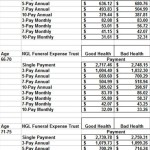Multi-Generational Homes: Floor Plans Designed for Family Harmony
Multi-generational homes are becoming increasingly popular, driven by a variety of factors, including the desire for family closeness, economic considerations, and evolving cultural norms. These homes are designed to accommodate multiple generations under one roof, offering a unique living arrangement that fosters intergenerational connections and provides practical benefits. As the demand for multi-generational living increases, home builders and architects are responding with creative floor plan designs that prioritize both functionality and privacy.
A multi-generational home floor plan must go beyond simply adding bedrooms. It should thoughtfully address the needs and preferences of different family members, ensuring a comfortable and harmonious living experience. Key considerations include creating distinct living spaces, providing sufficient privacy, and incorporating features that cater to the diverse needs of each generation.
Key Features of Multi-Generational Home Floor Plans
Multi-generational home floor plans are characterized by specific design elements that promote both shared living and personal space. Here are some common features to consider:
1. Separate Living Spaces
One of the core principles of multi-generational home design is creating distinct living areas for each generation. This provides a sense of privacy and autonomy, allowing each family unit to enjoy their own space while still being connected to the larger family. This might involve having separate living rooms, kitchens, or even separate entrances to different wings of the house.
For example, a floor plan could include a main living area for the primary family and a separate, smaller living space for an older generation or a young adult child. This creates a balanced approach, offering shared spaces for family gatherings and individual zones for quiet moments or personal activities.
2. Flexible and Adaptable Spaces
Multi-generational homes often incorporate flexible spaces that can be adapted to meet changing needs. This might include a guest room that can be converted into a home office or a multi-purpose room that serves as a playroom for children and a hobby room for seniors.
These flexible spaces offer a level of adaptability that is valuable in multi-generational households, as needs and dynamics can evolve over time. A well-designed floor plan should anticipate these changes and provide solutions that allow for seamless adjustments.
3. Accessibility and Universal Design
As the home accommodates individuals of different ages and abilities, accessibility and universal design features become paramount. This might include wide doorways, ramps for wheelchair access, grab bars in bathrooms, and lower countertops and cabinets that are easier to reach for those with mobility limitations.
Incorporating accessibility features from the outset ensures that the home remains comfortable and safe for everyone, regardless of their age or physical capabilities. This proactive approach creates a truly inclusive environment and promotes long-term functionality.
Types of Multi-Generational Home Floor Plans
Multi-generational home floor plans come in various configurations, each tailored to specific needs and preferences. Some popular styles include:
1. Attached Suites
Attached suites are a common design element where a separate living unit is attached to the main house. This unit often has its own entrance, kitchen, bathroom, and living space, offering a high level of privacy and independence. This type of design is well-suited for families who want to maintain a close connection but also value their individual space.
2. In-Law Suites
In-law suites are designed as separate living quarters within the main house, often featuring a bedroom, bathroom, and kitchenette. These suites are typically located on a lower floor or on a separate wing of the house, providing a sense of detachment from the main living area. This option is ideal for families who want their older family members to have their own space while still being part of the larger household.
3. Multi-Level Homes
Multi-level homes can be adapted to accommodate multi-generational families. The upper floors can be used for the primary family, while a basement or ground floor can be converted into a separate living unit for another generation. This design offers a degree of separation, allowing for distinct living spaces while maintaining a sense of community.
4. Open-Concept Floor Plans
Open-concept floor plans can be effective in multi-generational homes by creating a sense of interconnectedness. The open flow of the layout allows for natural interaction and promotes a feeling of togetherness. However, careful consideration should be given to soundproofing and creating private areas within the open plan to ensure individual privacy as well.
Conclusion
Multi-generational home floor plans offer a unique solution for families seeking to live together while respecting individual needs and preferences. By incorporating features such as separate living spaces, flexible layouts, and accessibility elements, these designs create a comfortable and harmonious living environment for all generations.

Fun Functional Multigenerational House Plans Houseplans Blog Com

Multigenerational Floor Plans Are Perfect For Extended Households

Multi Gen Homes D R Horton

Multi Generational Homes Finding A Home For The Whole Family

Multigenerational Home Design Is It Right For You Porch Advice House Plans Floor

Fun Functional Multigenerational House Plans Houseplans Blog Com

How To Build The Perfect Multi Generational Home Plans Included Oberer Homes

Best Multigenerational Homes Four Generations One Roof House Plans New Barndominium Floor

What Is A Multigenerational Home K Hovnanian Homes

Best Multi Generational House Plans And Dual Living Floor

